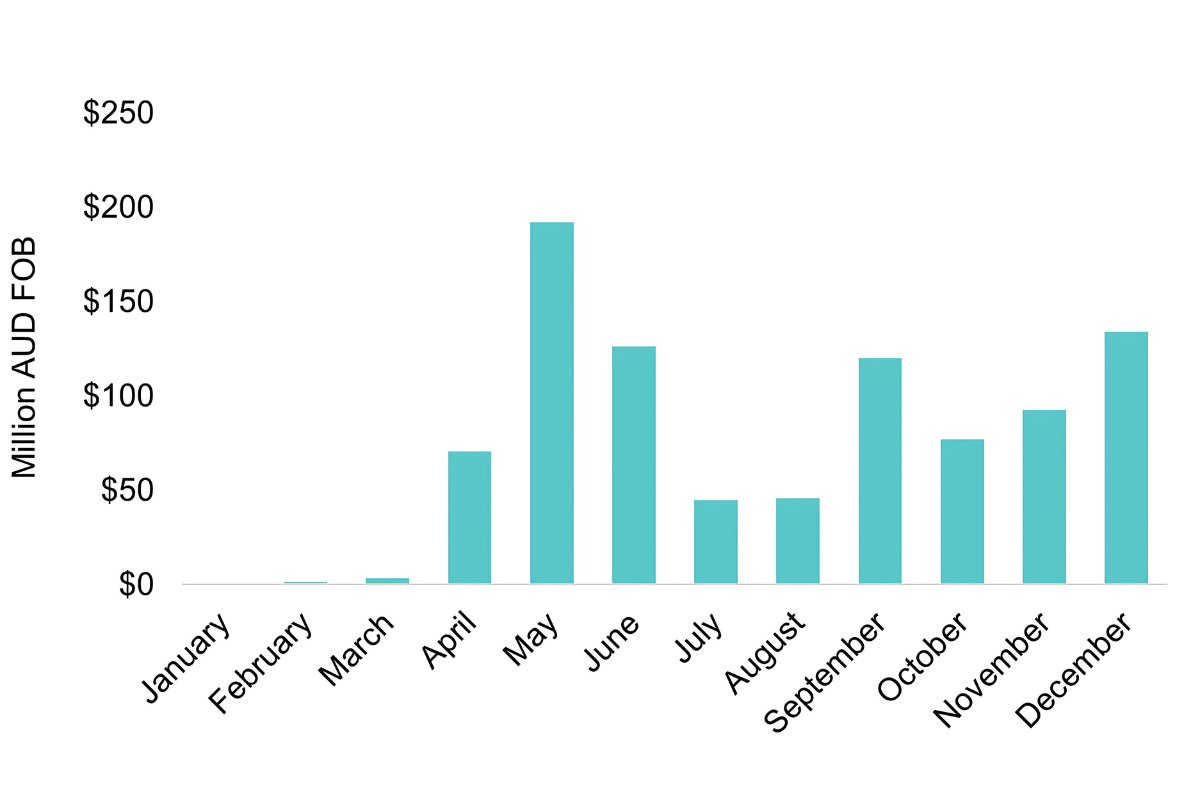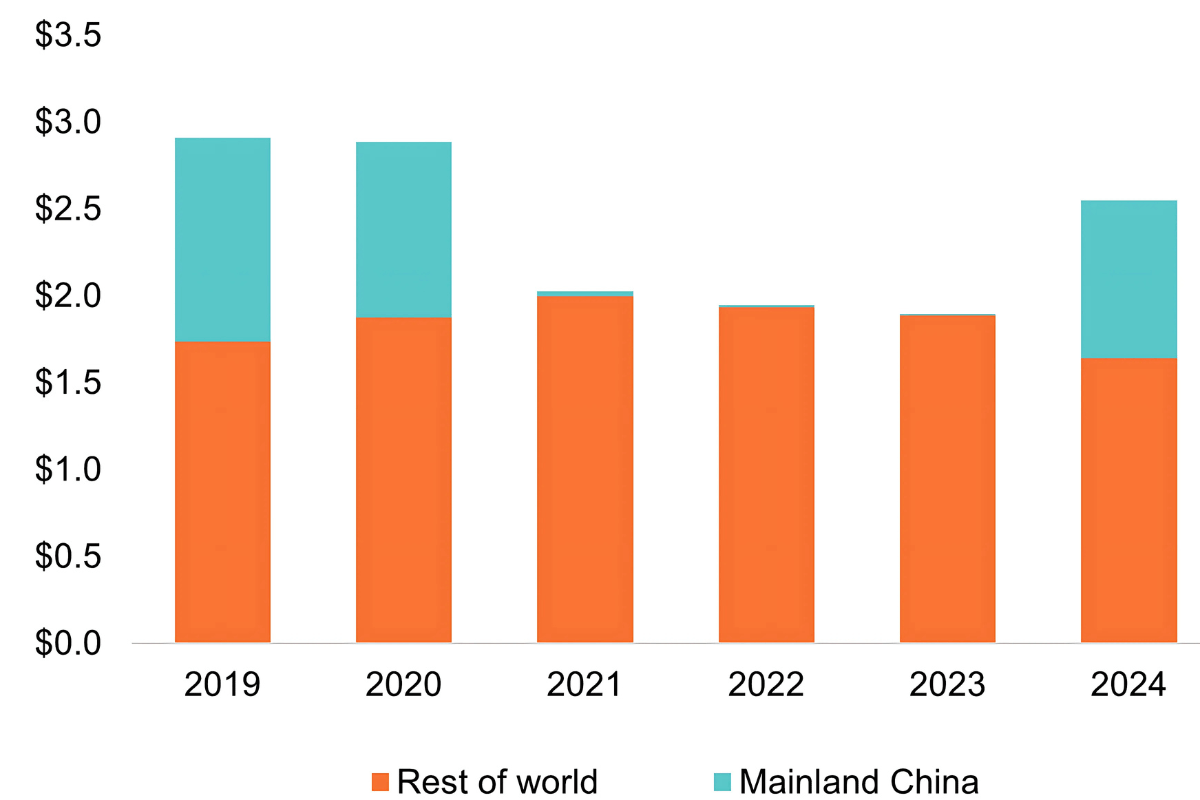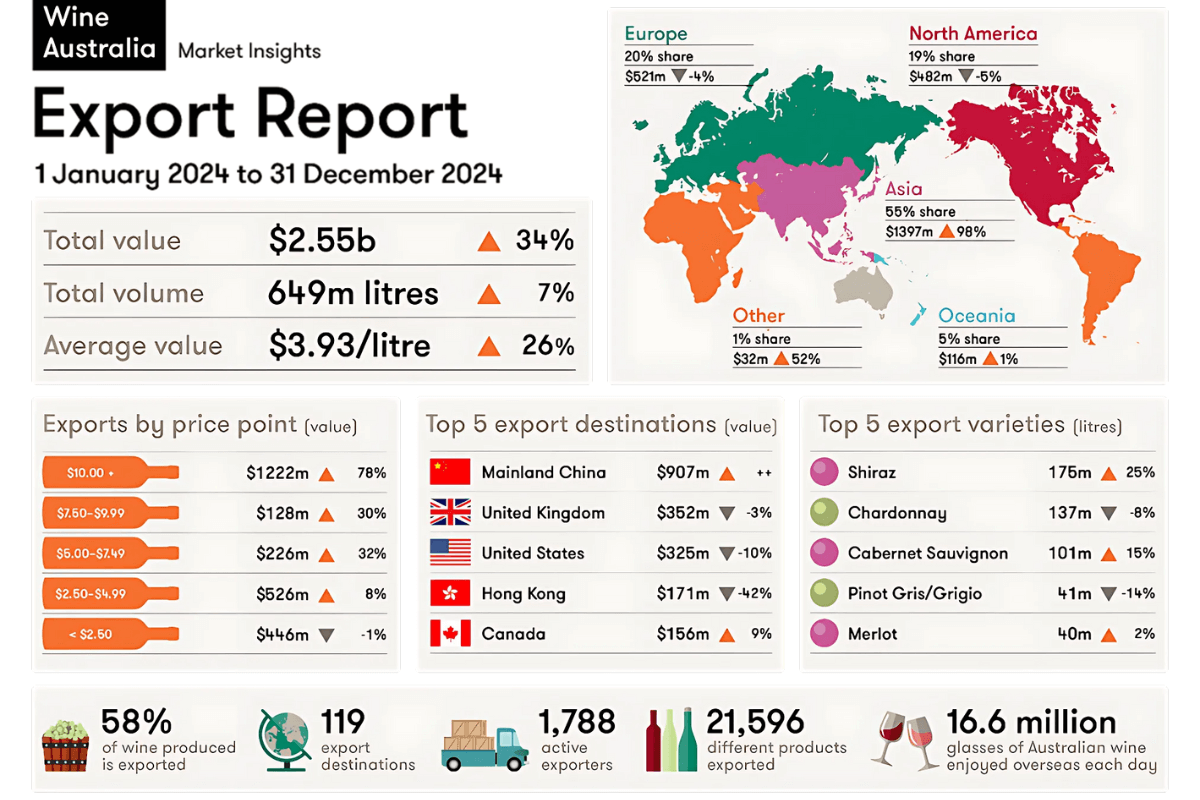Sommeliers Choice Awards 2025 Winners
Beyond China: Wine Australia’s Strategy for a Changing Global Market
Paul Turale on exports, emerging markets, and the future of Australian wine.

The Australian wine industry is at a crossroads. With the recent removal of tariffs, exports to China have surged, reigniting a once-thriving market. But this rebound comes amid a broader shift—one where premiumization, emerging markets, and evolving consumer preferences are reshaping the global wine landscape. Wine Australia, the organization tasked with supporting producers as they navigate new challenges and opportunities is helping drive this transformation.
Paul Turale, Wine Australia’s General Manager of Marketing, is working on efforts to ensure Australian wine maintains its global relevance. In this interview, he discusses how the industry is capitalizing on China’s reopening, why diversification into new markets is critical, and how consumer-driven trends are influencing Australia’s approach to international trade and marketing.
Following the recent removal of tariffs, Australian wine exports to China surged by 34% in 2024, reaching $2.6 billion. How is Wine Australia supporting producers in reestablishing and expanding their presence in the Chinese market? Are there specific initiatives aimed at ensuring sustained growth in this region?
The removal of tariffs has provided a vital opportunity for Australian wine producers to reconnect with the Chinese market. After tariffs on Australian bottled wine were removed at the end of March 2024, 83 million litres of wine worth $902 million were exported to mainland China between April and December 2024.
Wine Australia is supporting this recovery through a multi-faceted strategy, including tradeshows and roadshows, and education initiatives that highlight the quality and diversity of Australian wine. An inbound group from China will visit Australia to discover our regions, history, and stories firsthand in 2025.

South Australia continues to lead, accounting for approximately 64% of Australia's wine export value. How is Wine Australia promoting the unique qualities of other emerging regions, such as Orange in New South Wales, to diversify export profiles and reduce reliance on traditional strongholds?
South Australia remains a powerhouse for Australian wine exports, but we are committed to showcasing the diversity of Australia’s wine regions, including emerging areas such as Orange, the Granite Belt, and Great Southern. Our efforts include regional storytelling campaigns, immersive trade and media tours, and participation in global tradeshows (such as Wine Paris) where we highlight Australia’s diverse terroirs and varieties.
We also support regional branding initiatives that help lesser-known wine regions build their own distinct identities in international markets and bring the stories of these regions to life, demonstrating their unique climatic conditions, varietal strengths, and winemaking innovations. The Australian Wine Discovered education resources are a popular tool for trade in the market, providing excellent talking points and history of our regions and popular Australian varieties.
With companies like Treasury Wine Estates divesting lower-end labels to focus on premium offerings, how is Wine Australia supporting this industry-wide shift towards premiumization? Are there specific markets or demographics being targeted to enhance the perception of Australian fine wines?
Global consumer trends are demonstrating a shift towards premiumisation — consumers choosing to drink less but spend more. It’s certainly something we’re seeing in the resurgence of Australian wine to the China market, where the average value of exports to mainland China for the year ended December 2024 has increased to $10.79 per litre.
With 65 wine-producing regions and more than 100 grape varieties in Australia, our wine offerings are as diverse and unique as our country whether they are premium or commercial offerings. The reputation of Australian wine is amongst the world’s best; Australian wines can be trusted to be of high quality at any price point.
Beyond re-engagement with China, which emerging markets are showing the most promise for Australian wine exports? What tailored marketing and promotional activities are being implemented to establish a foothold and drive growth in these regions?

Market diversification remains a key focus for Australian wine, and we are working closely with the Australian government (Austrade) to understand market dynamics, category trends, and market access barriers or opportunities in emerging wine markets.
Wine Australia uses quantitative and qualitative data to broadly categorise markets as emerging, established (grow), or established (defend). These classifications inform resource allocation and market need – be that awareness building, education, or greater levels of promotional activity or possibly innovation.
Southeast Asia continues to gain traction due to Australia’s geographic proximity, rising disposable incomes, and increasing wine awareness, and is showing strong potential for Australian wine exports.
Investing in programs such as education, road shows, and trade shows to introduce Australian wine to trade, media, and consumers in these emerging markets will be critical for building recognition and appreciation for Australian wines.

Image: Wine Australia export report.
Given the global decline in wine consumption, what strategies is Wine Australia employing to stimulate demand internationally? Are there innovative approaches being considered to attract new consumers and revitalize interest in Australian wines?
Wine Australia is focusing on three key areas: Insights, Connections, and Capability.
Generating relevant and useful insights for the sector will enable better decision-making on market attractiveness, consumer wine-drinking motivations, and behaviours, and ultimately inform research and innovation investment.
Creating both in-person and virtual connections across the sector and markets to build awareness and preference for Australian wine is paramount.
Capability building will be designed and delivered to ensure that the sector is well-placed to capitalise on opportunities delivered under our Insights and Connections activities.
We continue to assess the opportunity by market, channel, and segment to understand where we can increase the relevance of wine and Australian wine’s role in unlocking more consumption occasions. The occasion drivers are often the catalyst for innovation.
Wine Australia partners with Austrade in markets where there isn't a permanent presence, mainly across Asia and emerging markets. Could you elaborate on how this collaboration functions and the specific benefits it brings to Australian wine producers looking to enter or expand in these markets?
Our partnership with Austrade is a crucial component of our international market development strategy. In markets where Wine Australia does not have a physical presence, Austrade provides in-market expertise, trade connections, and support to help Australian wine producers navigate regulatory requirements and develop market-entry strategies.
Through joint initiatives such as tradeshows, roadshows, market briefings, and in-market promotional events, we provide Australian wine brands with valuable insights and direct access to key industry stakeholders. Austrade’s established networks in government and business help open doors for Australian wine producers, enabling them to enter and expand in high-potential markets more effectively.

Image: Participants at an Australian Wines masterclass in Ho Chi Minh City. Source: Austrade.
Conclusion:
As Australian wine reclaims its place in China, the industry is also looking ahead, investing in education, trade partnerships, and market diversification to future-proof its exports. Wine Australia’s strategy reflects a deeper shift—not just in how Australian wine is sold, but in how it is perceived globally. From highlighting lesser-known regions to supporting premiumization, the focus is on long-term resilience rather than short-term recovery.
For producers, the challenge now is adapting to changing consumer habits while reinforcing the strong reputation Australian wine has built over decades. Whether through government collaborations, trade initiatives, or storytelling that brings Australian terroirs to life, the goal remains the same: to ensure Australian wine remains not just competitive, but indispensable in the global market.
In conversation with Malvika Patel, Editor and VP, Beverage Trade Network
Also Read:
Savoring Success: Wine Australia's Strategies for US Market Growth
Building Global Success: ECA Chair Dianne Tipping on Australian Wine and Spirits Exports
Jane Lopes: Australian Wine Importer & Legend Co-Founder Bringing Aussie Wines to U.S. Market



























